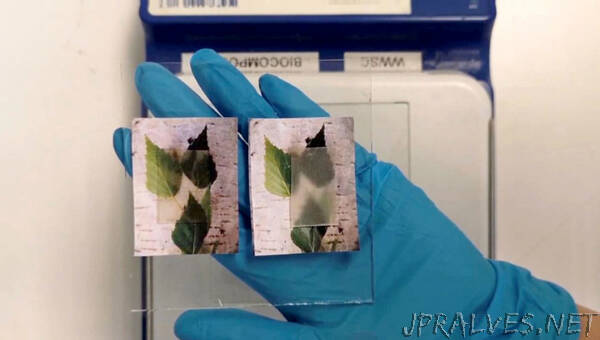
“Researchers from KTH have developed a window material made of wood that regulates how much heat it lets in – and out.
A newly-developed thermal energy-storing transparent wood was unveiled this week at the annual conference of the American Chemical Society in Orlando, Florida, by researchers from KTH’s Wallenberg Wood Science Center.
The see-through wood technology aims to answer a need in the construction industry for functional load-bearing materials that can cut energy consumption by storing and releasing large amounts of thermal energy.
Céline Montanari, a researcher at KTH, says the material offers better thermal insulation and it could reduce heat loss. Likewise, in warm weather the transparent wood can be tuned to allow a predetermined amount of heat to pass through, helping to maintain a comfortable indoor temperature even as the sun’s rays illuminate rooms.
While the material is somewhat opaque, similar to a frosted window, it becomes clearer as it stores more heat.
Montanari’s team, which is led by Professor Lars Berglund, has been testing wood composite from silver birch trees, which is then stripped of its lignin (the major light-absorbing component in wood), leaving empty porous spaces which are then filled with a polymer that matches the wood refractive index so that light propagates through the material.
The self-regulating thermal properties come from the addition of a phase change material (PCM), which is a one that changes from solid to liquid, and liquid to solid, and is capable of storing and releasing large amounts of heat. In their case, the KTH team used a non-toxic biodegradable PCM called polyethylene glycol (PEG)
While PEG is an effective phase change material – and its solid-liquid transition temperature is tunable by adjusting the material’s molecular weight – it does pose the problem of leaking during its melting phase. However the KTH tests show that removing lignin from wood leaves a strong scaffold of empty micro- and nano-scale pores that are perfect for trapping the liquid.
”Delignified wood is an ideal porous structure to encapsulate the PCM. Mainly because the wood can retain it from leaking out due to the wood’s high absorption capacity and its natural mesoporous structure,” Montanari says.”
